By Damon Wise
Tuesday, 21 April 2009
The last time Clint Eastwood saw Sergio Leone was in 1988. His Charlie Parker biopic, 'Bird', had just been released in Italy, to great acclaim, and he was visiting Rome on a press tour. While he was there, the great director called him. They hadn't seen each other in years, not since the late Sixties, and for a long while Eastwood thought they'd fallen out.
After three lucrative Spaghetti Westerns, Eastwood had bowed out of a fourth collaboration, called Once Upon a Time in the West, fearing the horse-opera boom would bottom out and take his burgeoning career with it. Leone was furious, but downplayed his disappointment; he later claimed, petulantly, that the actor only had two expressions anyway: "With or without a hat".
Yet that day Leone wanted to bury the hatchet. They went for a long lunch, with Lina Wertmüller, the director of Swept Away, and when Eastwood asked what he was doing next, Leone replied that he was still working on an idea for a film about Leningrad, a project he'd talked about while making The Good, the Bad and the Ugly in 1966. He just never could pull it together, noted Eastwood.
If there had ever been any animosity between them, though, it faded that day. Leone, a big, proud man in his prime, wanted to put all that in the past; he was reaching out. "It was almost like he was saying goodbye," remembers Eastwood, his voice soft and clear, not at all like the gravelly growl of Dirty Harry or Gran Torino's Walt Kowalski. "Like he was feeling vulnerable." A few months later, in April 1989, Leone died of a coronary. He was 59.
They met back in the early Sixties, when Leone was prepping a script called 'Il Magnifico Straniero' ('The Magnificent Stranger') based not too subtly on Kurasawa's Yojimbo. "Sergio had only done one movie," says Eastwood, taking a break from shooting his as-yet-untitled Mandela biopic, his 31st feature as director in 38 years. "But everybody said he was quite well thought of in Rome as a guy with a great sense of humour. I said, 'I can tell he has a great sense of humour by his writing.' And I thought it was a good opportunity at that time, too.
"I was doing a TV series, Rawhide, and I'd been doing it for quite a few seasons, so I was kinda bored with it. I didn't necessarily want to do a Western on a hiatus period, but I thought it seemed like a nice thing to do. Especially because Yojimbo, when I first saw it back in the Fifties, I thought of as a great Western screenplay. I thought nobody would have the nerve to do it that way. But, fortunately, Sergio did."
Originally Leone wanted the cowboy star Rory Calhoun for the title role, but settled for the 34-year-old Eastwood. "Because I was cheap," he laughs. "Sergio spoke very little English, and I didn't speak any Italian at that time. So we got together with an interpreter when I reached Rome. And through the interpreter – plus a lot of hand signals – we kind of got the idea." For the part of the Stranger, later dubbed by savvy American marketeers as "The Man with No Name", Leone trusted Eastwood to sort out his own wardrobe, and he duly arrived on set with a selection of hats and ponchos. "I also went out and bought a bunch of cigars that I thought would look good in a Western," he recalls. "I had no idea they'd taste so vile! But I brought those along with me and I gave them to props and we cut them all up. They were long cigars, called Virginia. I made a slew of them that I carried around in my pocket: different lengths to match up with different scenes."
And as for his character, Leone let Eastwood get on with that, too. "Well," he says, "he was an enigma, just as he was in 'Yojimbo'. In Yojimbo they explain that he was a samurai, someone who was almost outmoded in society, and the Western hero is pretty much the same, as depicted in those movies."
Leone was a funny guy, Eastwood says. "And he loved food. He loved food. The first day we filmed, we were shooting in a studio outside of Rome, and we sat down for lunch. We had this huge meal. Spaghetti. I love spaghetti, so I loaded myself up. And then they served wine. Everybody was having wine. So I said, 'Okay, I'll have a few glasses of wine, too.' Well, we went back to work, and suddenly I realized, 'I'm not going to be able to do this.'" He laughs. "For that first hour or two after lunch everything was pretty much done in slow motion!"
After production wrapped, The Magnificent Stranger disappeared. "And then," says Eastwood, "I started reading in Variety about this picture that was causing quite a stir in Rome and Naples. It was called Per un Pugno di Dollari (For a Fistful of Dollars) and it didn't seem at all familiar to me! I just kept reading about how well this picture was doing. And then, finally, I guess after a couple of weeks of reading about this film, I noticed they said, 'A Fistful of Dollars, starring Clint Eastwood...' I thought, 'Oh my God, it's that picture!' I didn't know what had happened to it! It didn't even have Sergio Leone's name on it, because he'd changed his credit to Bob Robertson, because he wanted to have an English or American-sounding name. So I didn't get the association until they called me up and asked me to do a second picture."
But Eastwood could tell this director was something special and he agreed to return, completing an astonishing Western trilogy in just two years and causing a box-office sensation in the US that made Eastwood a star. "Sergio was visual from the very beginning," he says. "He had an interesting approach. He tied things up very well. I was used to filming where the shooting was on a much smaller scale, and he seemed to shoot things in a fairly large scope, which I liked. He was a big fan of John Ford, people like that. He wanted to be a director of size, so to speak. But I was always amazed that Sergio was never very prolific after that."
Clint Eastwood's full interview, with further photos, can be found in the June issue of 'Empire' magazine on sale from Thursday 23 April. The 20th Anniversary Edition is guest-edited by Steven Spielberg and includes exclusive interviews with Jack Nicholson and Tom Hanks as well as specially commissioned photo shoots with Arnold Schwarzenegger, Tom Cruise, Mel Gibson, Christian Bale, Anthony Hopkins and Jodie Foster. Copyright Empire Magazine 2009.
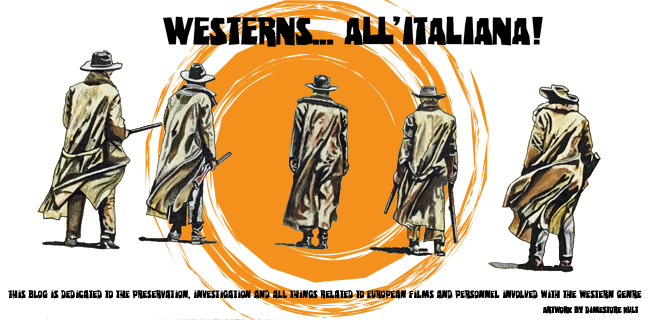
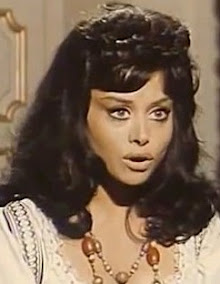
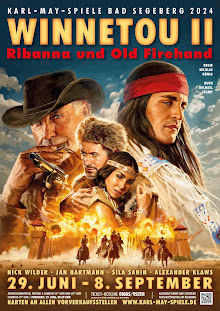



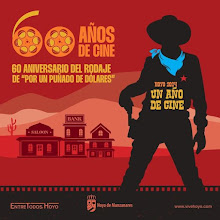

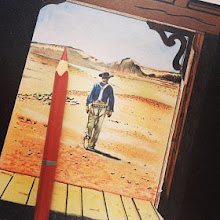

I've heard two different stories about Eastwood and Once Upon A Time in the West. One version has Leone pitching him the Harmonica role and Eastwood getting decisively bored by the director's oppressively detailed account of the train station opening sequence. The other had Leone proposing that Eastwood, Wallach and Van Cleef playing the three men to be gunned down by Harmonica at the station. I can't imagine Leone even daring to make that offer to Eastwood, so the first version seems more plausible.
ReplyDeleteA fan of the Dollars Trilogy for 45 years.
ReplyDeleteI have been a fan from the beginning, having seen the films ffrom their first release in the U.S. theaters and then attending several marathon film screenings of all three shown back-to-back in the theaters in later years. Still today, while channel surfing if I come across one of them, I will stop surfing and watch it in its entirety. There is something there that has not been successfully reproduced except possibly in Once Upon a Time In the West, Pale Rider, and High Plains Drifter. I tried to analyze the films and wrote an article called "New-Age Film Western Film Techniques" on the Portfolio Tab on my company website: http://www.MediaTechniques.com. I proposed film techniques to try to capture their magic in new films while adding new innovations, panaramic views, historical references, and powerful new music scores. I wrote a Western screenplay (also on the website) called "The Last Gunfight" which tells a story of a young up and coming gunfighter who is unknowingly being mentored by the legendary gunfighter he is searching for to take away his "fastest gun" title and fame.
Charles C. Brooks
President, Media Techniques, Inc.
http://www.MediaTechniques.com
I believe Clint was offered, along with Eli and Van Cleef, one of the roles of the three gunmen of waiting to meet Bronson at the Cattle Corner station. Van Cleef said he accepted the role but it never happened. This was Sergio's swan-song to the western and he wanted to end the Dollars trilogy actors and move on to another trilogy of OUATITW, Duck You Sucker and OUATIA. Clint refused and Eli can't remember and that was that. Sergio wanted Bronson as the original Man with No Name so here was his chance to have him as a lead in one of his westerns. He also thought of Fonda as an older Man with No Name and now he had him on board so Clint being offered the lead I can't see.
ReplyDeleteI can see Clint being proposed to Sergio by studio people, though. Clint and Sergio together must have sounded like pure money to them.
ReplyDelete